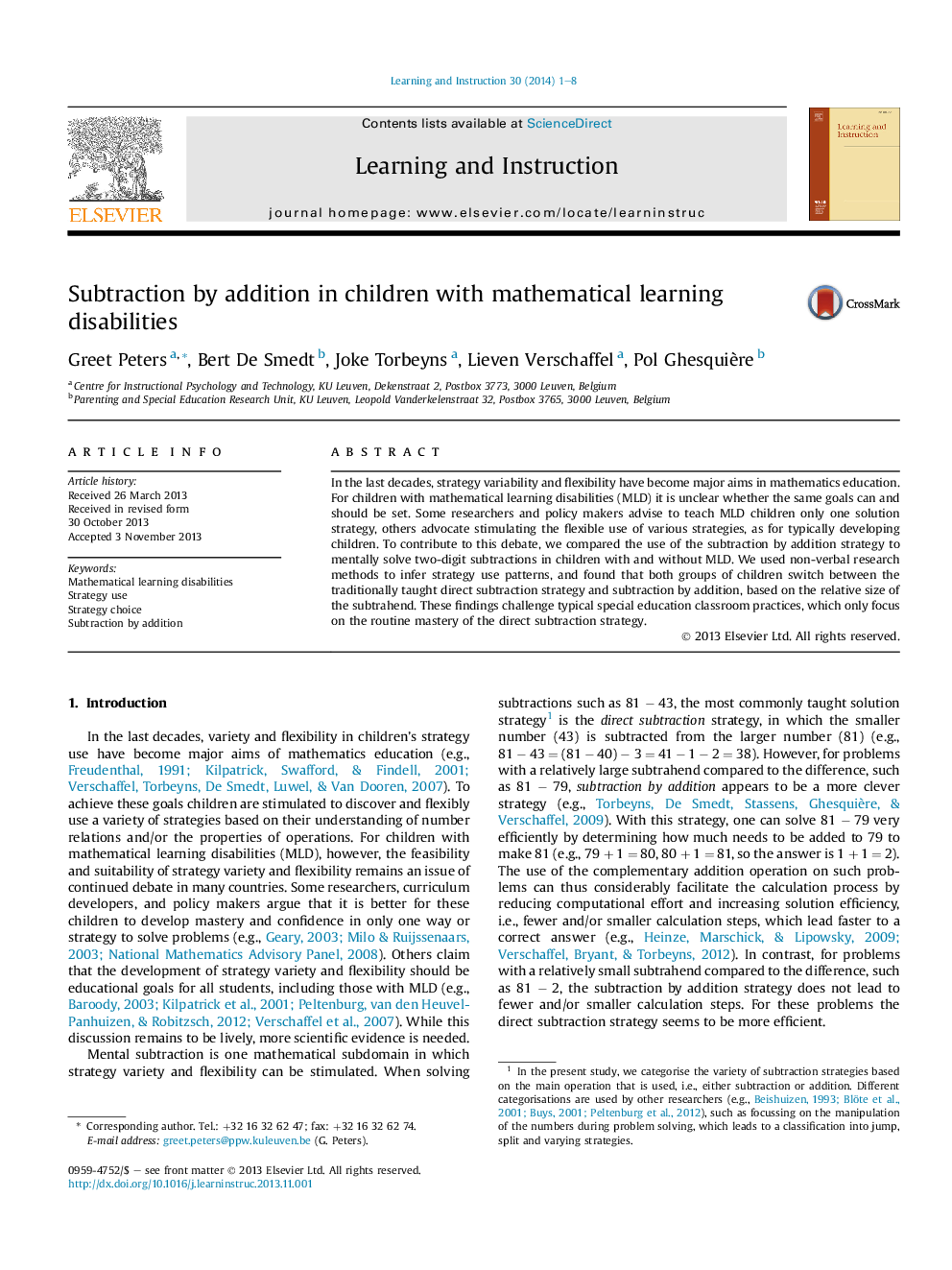| Article ID | Journal | Published Year | Pages | File Type |
|---|---|---|---|---|
| 365591 | Learning and Instruction | 2014 | 8 Pages |
•This study focuses on how children with MLD solve multi-digit subtraction problems.•Children with MLD are able to flexibly solve multi-digit subtraction problems.•They switch between direct subtraction and subtraction by addition strategies.•Strategy choices are based on the relative size of the subtrahend.•Findings in children with MLD are similar to typically developing peers.
In the last decades, strategy variability and flexibility have become major aims in mathematics education. For children with mathematical learning disabilities (MLD) it is unclear whether the same goals can and should be set. Some researchers and policy makers advise to teach MLD children only one solution strategy, others advocate stimulating the flexible use of various strategies, as for typically developing children. To contribute to this debate, we compared the use of the subtraction by addition strategy to mentally solve two-digit subtractions in children with and without MLD. We used non-verbal research methods to infer strategy use patterns, and found that both groups of children switch between the traditionally taught direct subtraction strategy and subtraction by addition, based on the relative size of the subtrahend. These findings challenge typical special education classroom practices, which only focus on the routine mastery of the direct subtraction strategy.
